Swirling Timbers of Chaos
2010
66” x 60”
Brushstrokes: 24,875
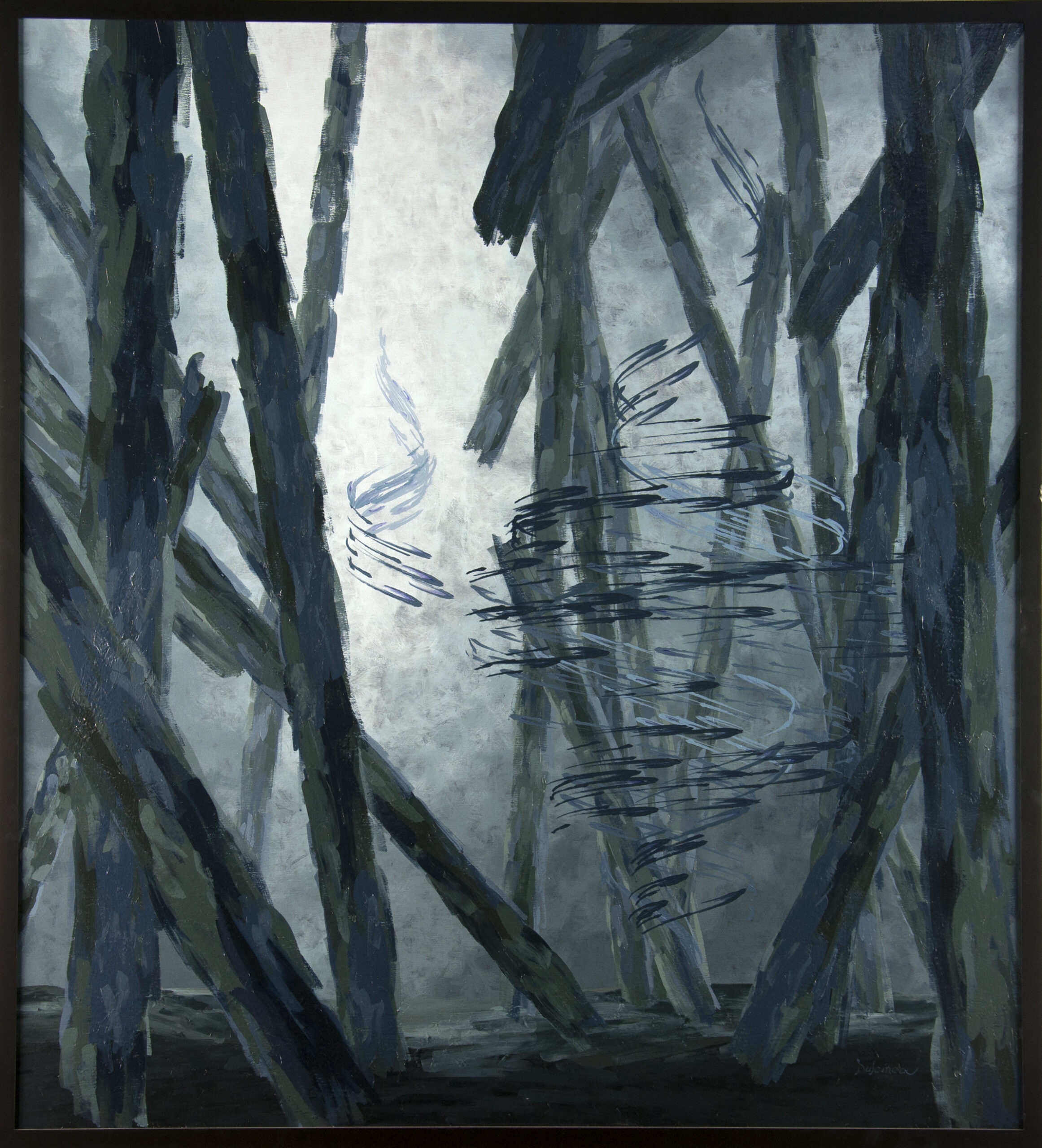
View in Gallery
Enter a brooding , dark, three-dimensional world of perspective and depth. Swirling energy pulls the observer into a world of smoky sfumato mystery and atmospheric darkness. Paul Kirby’s desire to merge the worlds of his passions brought great determination and a myriad of varied methods to the creation of this enchanting work, where art and technology meet to forge deeper meaning and greater narrative scope.
The finished work evolved from an initial glimmer of an idea; to pick up sticks; to a clay model; to a mathematical wireframe cube in “object space”; to a fully-realized image in virtual “world space”; to a projected view in flattened, 2-D “planar space”; to “display space”; to converted data for Dulcinea the robot to understand; to robotic coordinate space; to a final painting in “canvas space.” The involved and intricate labors of the work conspire to produce its raw, emotive power, and observers are left with a sense of awe, unease, and wonder.
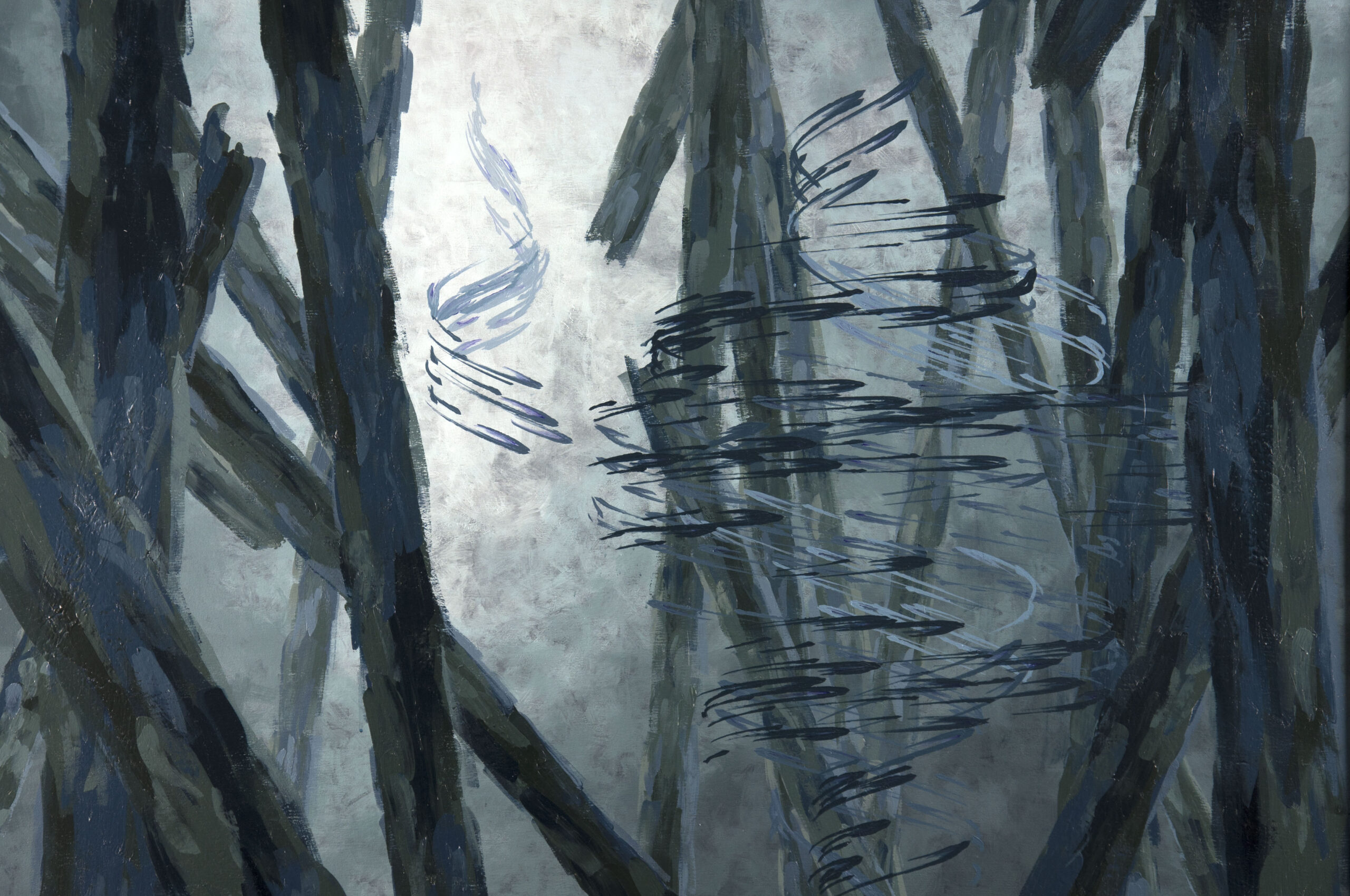
Artistic Concept
Paul Kirby’s initial impulse for this painting was to create an edgy, dark, intense experience. Swirling energy passing destructively through “pickup sticks” provided the initial imaginative spark.
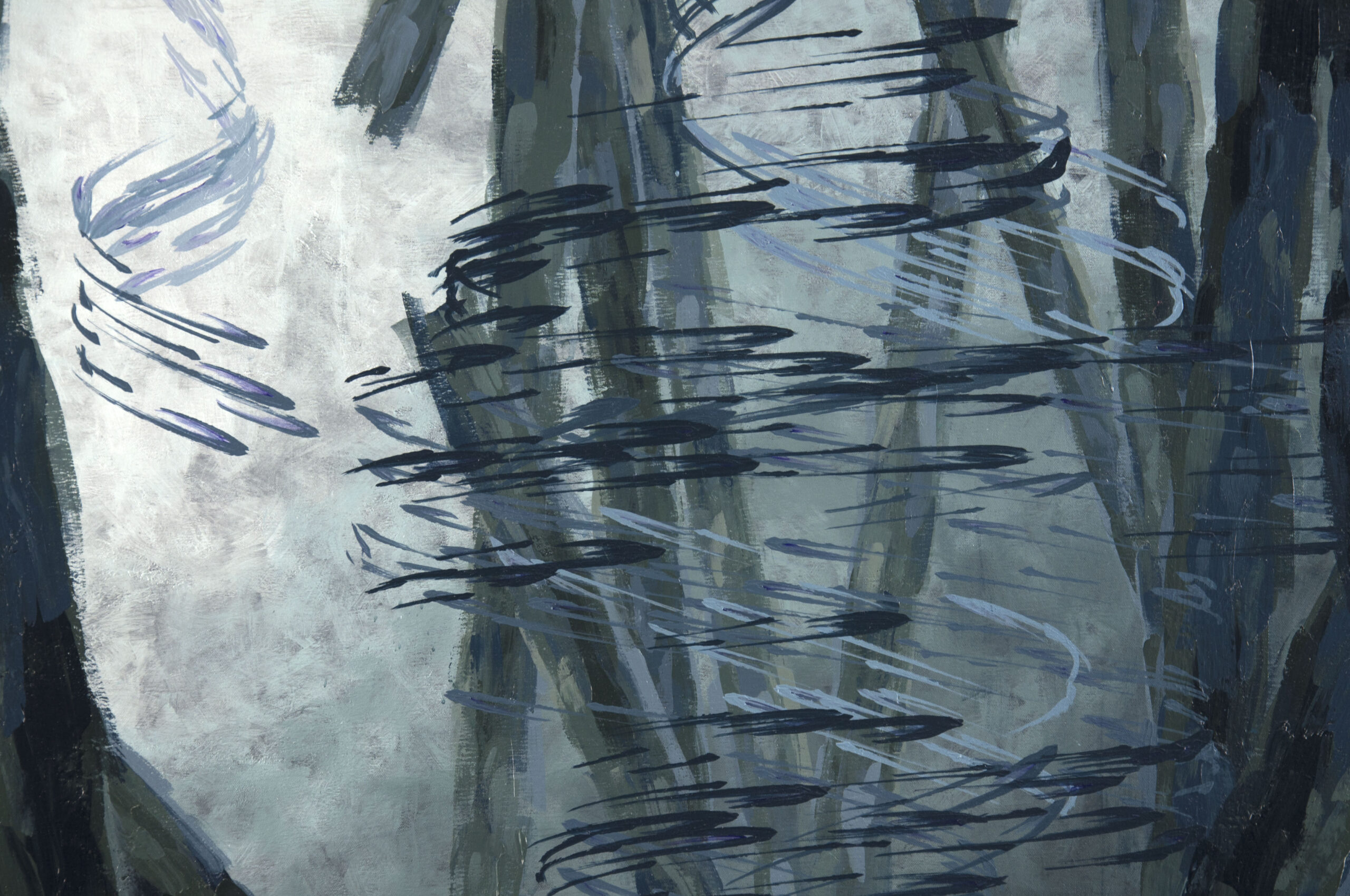
Artistic Development
Conceptual images for the ominous atmosphere, color and lighting, were borrowed from how the dark, misty moors might appear in Sir Arthur Conan Doyle’s Sherlock Holmes novel, The Hound of the Baskervilles. A scale clay model, featuring balsa-wood “timbers,” (arranged like a childhood game of “pickup sticks”) was instrumental in further evolving this concept.
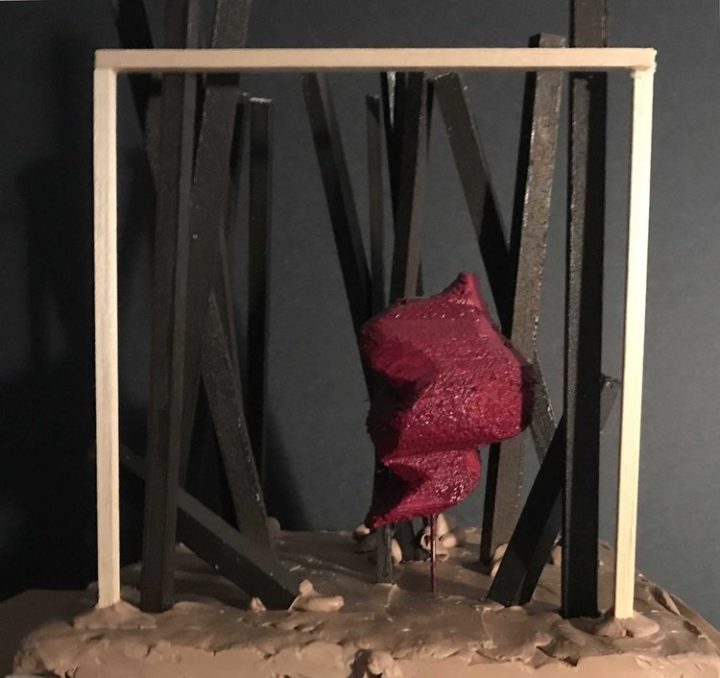
If you were to take images of a forest, and then build a clay model with wooden sticks representing the trees, you would imagine that the bottoms of the sticks would all be firmly rooted in the clay earth, growing up from the ground, the same as real trees in a real forest. However, the initial artificial-intelligence rules for seeding the timbers in this three-dimensional, mathematical world did not specify that the timbers had to be “grounded.” What a pleasant artistic surprise when the jagged lower-ends of some of the timbers ominously floated overhead, enhancing the desired artistic effect for the painting.
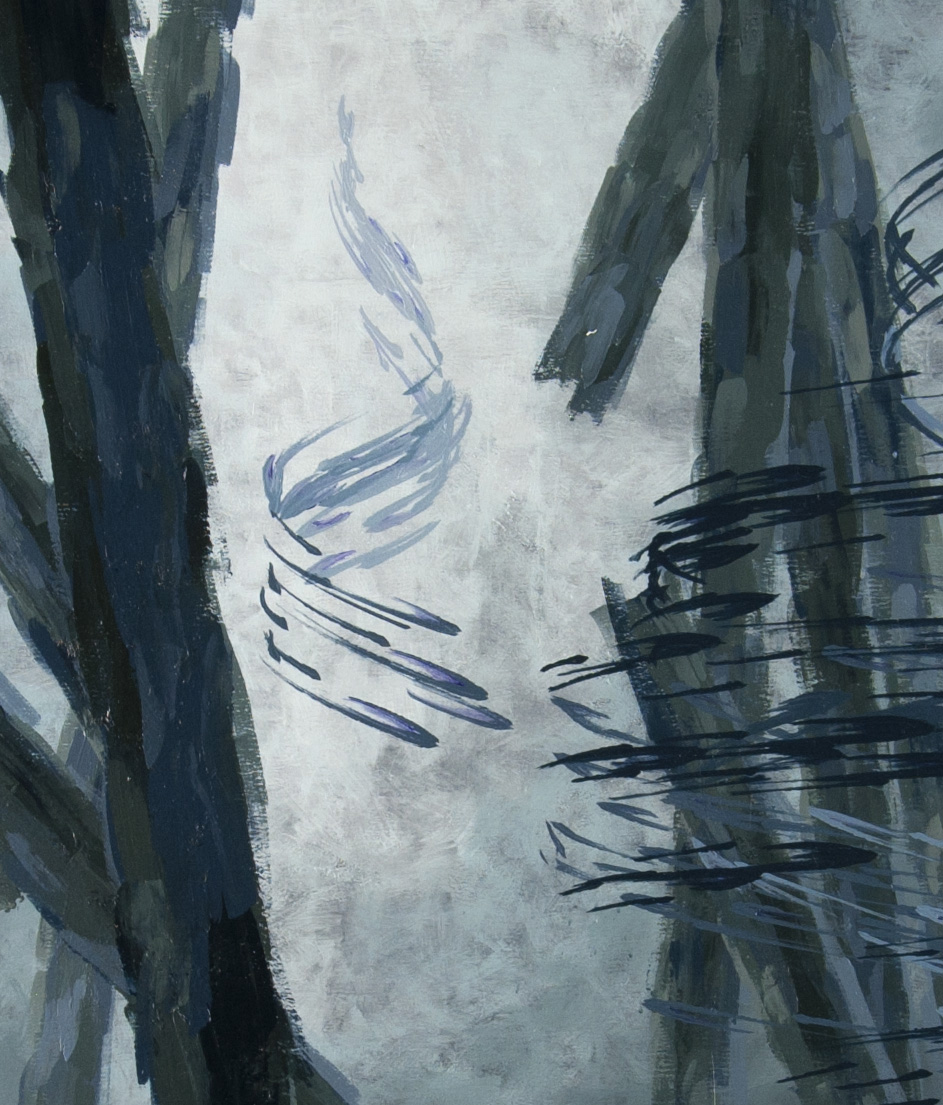
The foggy environment and dark atmosphere were created with a Renaissance technique called sfumato, a favorite of Leonardo da Vinci.
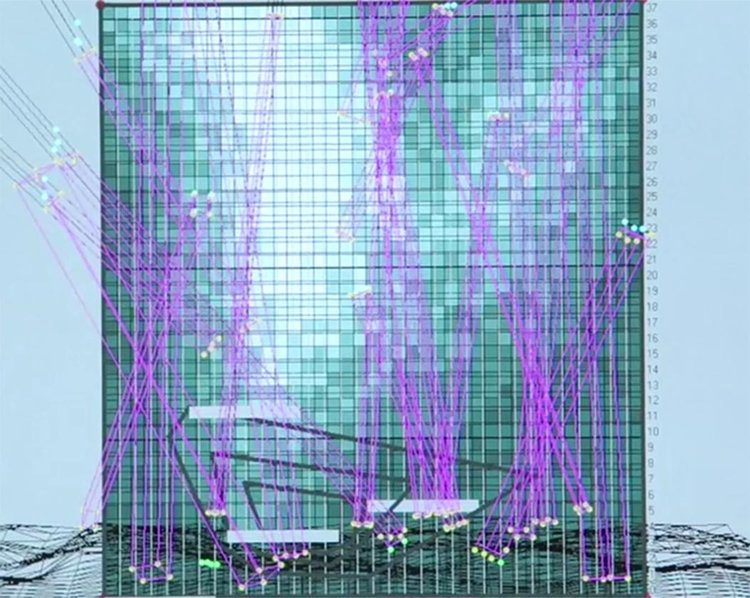
Technical Description
Parts of this painting were created using a form of artificial intelligence called Complex Adaptive Systems. Paul wanted to continue evolving his approach of AI agent “ants and breadcrumbs,” stigmergy (a method of indirect informational conveyance about an environment between AI agents), and subsumption architecture (a hierarchical method of AI construction) used on previous paintings. The goal was to progress from the ants’ 2D environment into a 3D world– an evolution akin to the ways Renaissance painters looked at perspective and added depth to their art.https://fusioneer.wpengine.com/wp-admin/post.php?post=671&action=edit#
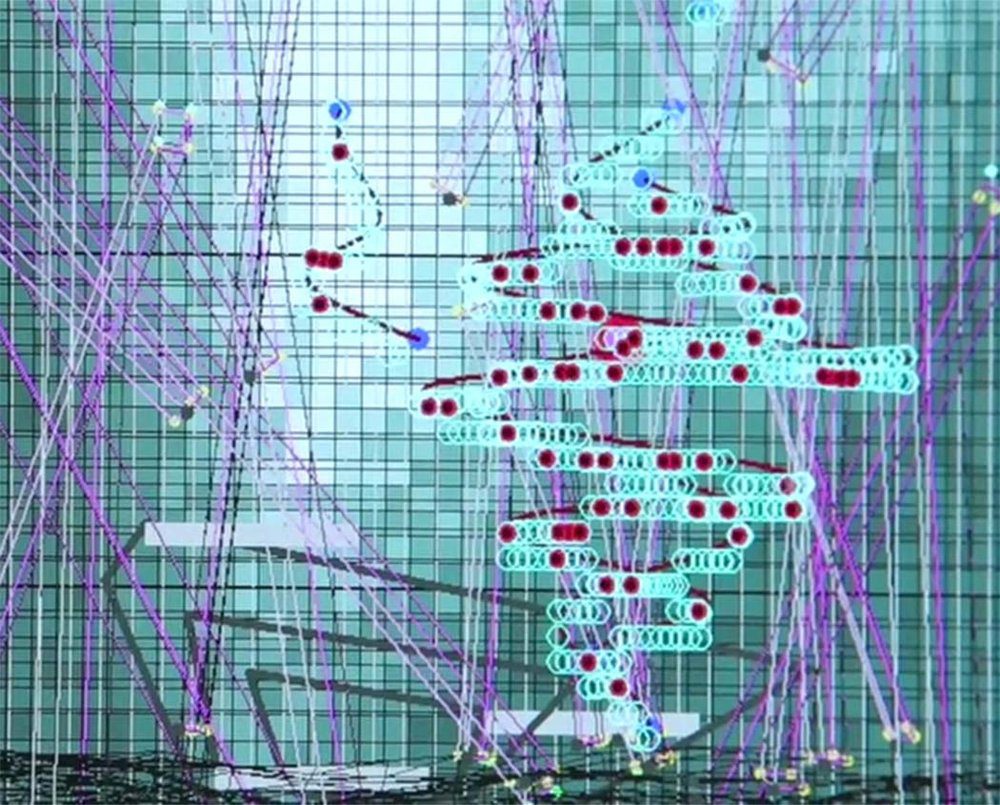
Creating Ants in a 3-D World
For the swirling energy at the center of the painting, Paul wanted three-dimensional helical splines inside the mathematical cubic simulation. Next, Paul inserted breadcrumbs in the cube along these spline lines for the AI ants to discover. Paul randomly dropped a colony of 10,000 ants into the three-dimensional space and allowed them to wander around their new virtual world.
When an ant discovered a breadcrumb in the world, it would deposit a pebble. To speed up the simulation of the ants’ work efforts, pheromones were added, an element which left a chemical trail, but which also decayed with time. Later, pebbles were collected and converted into brush strokes representative of swirling flashes of energy.https://fusioneer.wpengine.com/wp-admin/post.php?post=671&action=edit#

Summary
The developmental interplay of the artistic story and technical scheme behind Swirling Timbers created an exciting opportunity in Paul’s quest for the fusion of art and science.
As hoped for, the painting captures a swirling, malevolent energy and elicits strong emotions, leaving a trail of questions that linger in the viewer long after they’ve stepped away from the intense, dramatic piece.
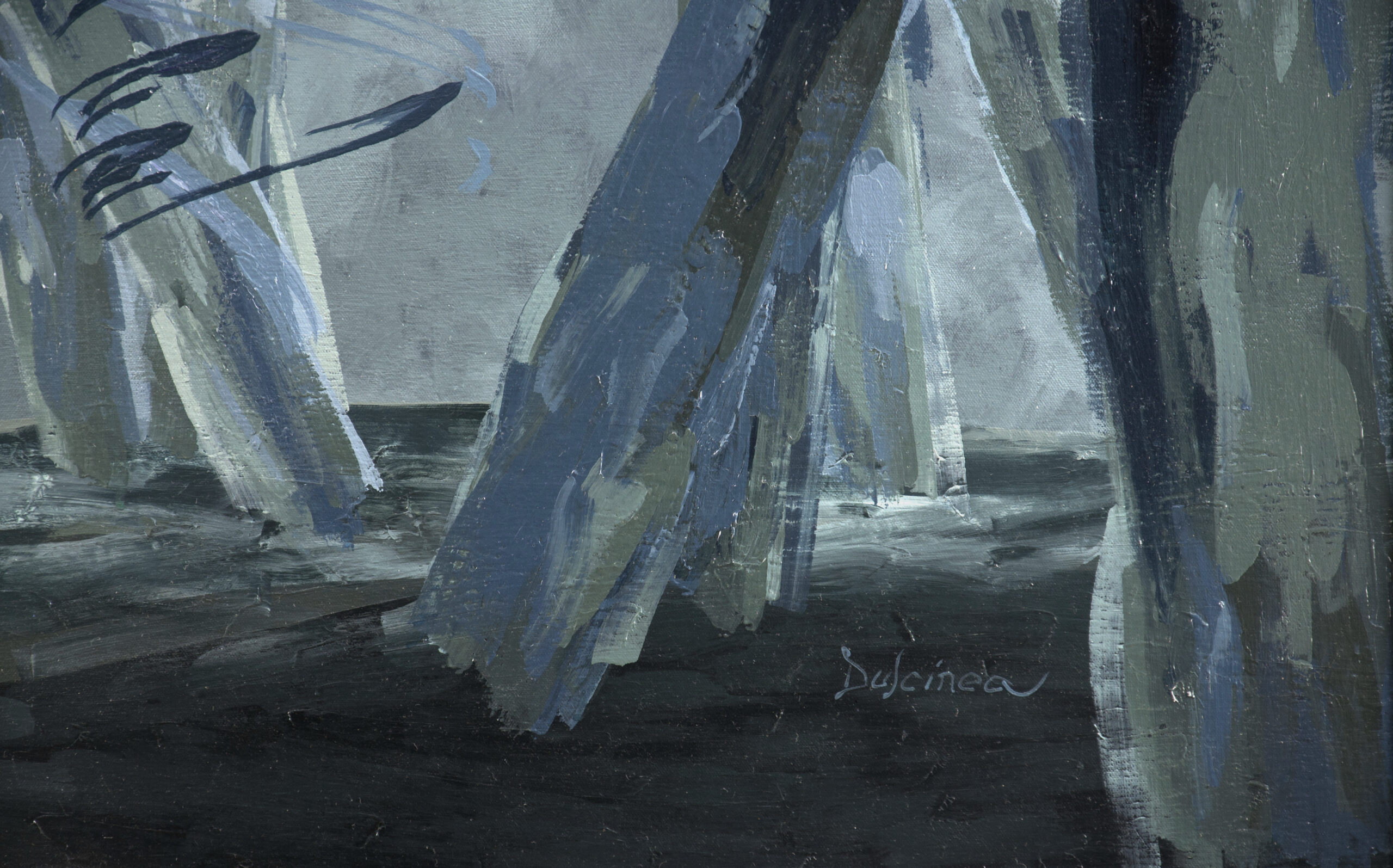
View in Gallery